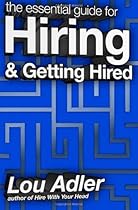Having written an entire workbook teaching people how to reduce the "frazzle" of life, it always surprises me when I stumble on a new stress management technique that actually works. Sure, there's always some new fangled idea floating around. Unfortunately, more often than not, I find such ideas are full of promise but lack the substance to really make them worthwhile.
This is why I'm so excited to share my latest discovery and how it came about. Here's the story:
I caught a radio interview with Goldie Hawn the other day. Yes, she's the stunningly beautiful blond actress who appears to be aging backwards in a Benjamin Button kind of way. But she wasn't sharing beauty tips. Instead, she was talking about a new children's education program her foundation is supporting called Mind Up.
This program seeks to incorporate mindfulness strategies into traditional classroom education. The research of positive psychology shows that teaching children strategies for focusing their attention and monitoring experience without immediately reacting has the potential to impact brain function as well as improve social and emotional well-being and balance.
During the interview, the actress-turned-advocate discussed one aspect of the program that particularly caught my interest. Among other activities, children in the Mind Up program enjoy "Mindful Minutes," where they simply sit quietly and reflect. This gives them a few short meditative breaks during the otherwise chaotic school day in which they are given the space and freedom to decompress and wind down. They're finding that children in the program are experiencing less stress, have better concentration, and feel more optimistic in general.
So, this got me thinking. What if we all took Mindful Minutes throughout the day? What if, every few hours, we just shut the door or stepped away from the computer for just five minutes and let silence wash over us? How would that impact our stress throughout the workday?
I've been trying out the technique for the past few weeks since I heard this interview. And, though it's been somewhat difficult to get into the rhythm, I've definitely noticed a significant impact on days when I make Mindful Minutes a priority.
My final verdict? Mindful Minutes are a great addition to any stress management program.
Here's why:
Strength of Body and Mind
It only takes a few minutes to re-energize your body and mind. Energy levels stay remarkably higher when you aren't camped out at your desk all day. Mindful Minutes will force you to get up and step away from your groove. If possible, go outside and enjoy a little sunshine and fresh air in the process. Physically, you'll feel less tense and mentally, you'll be more alert when you return.
Improved Creativity and Enthusiasm
Even if you're totally absorbed in a project, breaking your stride is actually a really GOOD thing. It gives you a chance to take a step back, shift your perspective and gain clarity. Sometimes, we get so deeply focused on the details; we lose sight of the bigger goals. A few minutes to reflect and mentally reorganize can do wonders for creativity and enthusiasm.
More Rational Decision-making
When emotions are running high or you're feeling anxious and stressed, it can be tempting to make snap decisions. This is especially dangerous in the workplace. A few minutes spent relaxing in a quiet environment can help put things back in perspective and inspire you to handle frustration in a more rational, professional way.
How to Use Mindful Minutes
If you're interested in using the Mindful Minutes technique, here's what I would recommend:
- Make a schedule and follow it. Every two to three hours worked well for me, but you might want to play around with it. Just don't let yourself do it "whenever you feel like it" because, chances are, you'll get distracted and won't follow through. Plus, part of the impact comes from the routine. When you don't think you need to do it, you often have the most powerful experiences.
- Keep the breaks short. Don't dawdle and waste time. This isn't a real "break". It's a brain break. Five minutes is really ideal.
- Have an established place to go where it's quiet and you won't be bothered. If possible, go outside and stand in a ray of sunshine.
- Don't DO anything. This isn't a break to run an errand, pick up lunch or chat with a co-worker. Resist the urge to multi-task. Your only responsibility for these five minutes is to yourself.
I know how hard it is to manage stress, whether at work, at home or on the road. Even with all the research I've done and all the techniques I've used, I still have trouble on some days. I know regularly incorporating the Mindful Minutes strategy into my regular routine will have a profound effect. I hope you'll try it as well and report back.
Chrissy Scivicque (pronounced "Civic"), founder of Eat Your Career, is an award-winning freelance writer/editor with a passion for two things: food and helping others.
Thanks to Chrissy Scivicque / Careerealism
http://www.careerealism.com/manage-stress-work/?utm_source=feedburner&utm_medium=email&utm_campaign=Feed%3A+careerealism+%28CAREEREALISM%29
BlogSpot:- http://ziaullahkhan.blogspot.com


